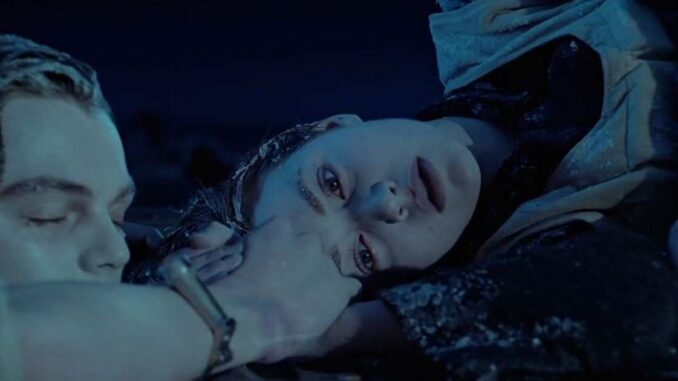
The Ice and the Inquiry: When James Cameron Reimagines a Sinking Heart
The image is seared into cinematic scripture: two lovers, adrift in the frigid Atlantic, clinging to a splintered piece of door that seems, infuriatingly, just large enough for one. For a quarter-century, the death of Jack Dawson in James Cameron's Titanic has been more than a tragic plot point; it has been a rallying cry, a meme, and a source of fervent frustration for millions who believed, with a visceral certainty, that "there was enough room on that door." Now, in a move as meticulously obsessive as his filmmaking itself, James Cameron has revisited this icy grave, not with sentimentality, but with science, illustrating not only his relentless pursuit of factual grounding but also the enduring, almost mythic power of a story that captivated the world.
Cameron’s decision to formally test the "Jack could have survived" theory for a National Geographic special isn't merely a director's belated response to fan mail; it’s a fascinating window into the mind of a filmmaker who blurs the lines between artist and engineer, storyteller and explorer. For him, the Titanic wasn't just a set; it was a deep-sea obsession, leading him to the actual wreck repeatedly. This latest endeavor reflects that same exacting spirit: a desire to dissect the physics of a fictional moment with the rigor usually reserved for forensic investigations. It illustrates that for Cameron, even in the realm of fiction, there is an unshakeable compulsion to ground narrative choices in plausible, if not absolute, reality.
The testing itself was a microcosm of Cameron’s methodology. He didn't merely speculate; he replicated. A prop replica of the iconic door was constructed. Stunt performers, matching the body mass of Leonardo DiCaprio and Kate Winslet, were brought in. Hypothermia experts were consulted. The director even enlisted the help of MythBusters alumni for previous, less formal inquiries. This wasn't a casual thought experiment; it was a full-scale, controlled scientific examination of a cinematic sacrifice. This meticulous approach illustrates Cameron's belief that even the emotional impact of a scene benefits from a foundation of verisimilitude. The very act of placing two human bodies, grappling with buoyancy and the terrifying inevitability of freezing, highlights the brutal pragmatism that often underlies his epic romanticism.
The findings, presented with scientific precision, offered a nuanced answer. Yes, under ideal circumstances, if Jack and Rose had carefully balanced their weight, perhaps even using Rose’s life jacket underneath the door for added buoyancy, they could have both fit, at least partially, out of the water. This tantalizing "what if" immediately validates the decades of fan outcry. However, the experiment also illustrated the crucial caveat: even with optimal positioning, the exposure to the icy water would have significantly reduced their survival time. A shared space meant prolonged exposure for both, a precarious equilibrium against the relentless chill. Cameron ultimately concluded that while a perfect scenario might have allowed two, the actual chaos of a sinking ship, the frantic struggle, and the inherent disadvantage of two bodies radiating heat would have, in all likelihood, killed them both faster. Jack’s sacrifice, therefore, still stood as the most dramatically impactful and, in the real-world chaos, probably the most survivable option for one of them.
Beyond the immediate findings, Cameron's revisit illustrates several deeper truths. Firstly, it underscores the extraordinary power of cinema to create narratives so potent that audiences invest in them with a passionate, almost personal stake. Jack's death wasn't just a character expiring; it felt like an injustice, a failure of ingenuity. Secondly, it highlights the constant negotiation between artistic necessity and scientific fact in storytelling. Cameron, the scientist, acknowledges the physics, but Cameron, the storyteller, defends the narrative choice. Jack had to die, not just for the sake of the plot, but for Rose's character arc, for the weight of her survival, and for the tragic grandeur of the film. His death transforms her, propelling her into a life lived fully, a poignant echo of his final wish. Science can analyze the "how," but art dictates the "why."
Ultimately, James Cameron revisiting the door theory is less about vindication and more about clarification. It's an illustrative journey into the ghost in the machine of his own creation, a detailed inquiry into why a fictional decision resonated so profoundly. It reminds us that filmmaking, at its highest level, is a blend of artistry and engineering, emotion and empirical data. Jack Dawson’s death remains an unassailable truth of the film, but Cameron’s inquiry into its physics only deepens our appreciation for the meticulous thought that shaped a story that, like the iceberg itself, has carved an indelible mark on our collective imagination. The door, it turns out, was never truly about space; it was always about sacrifice.
